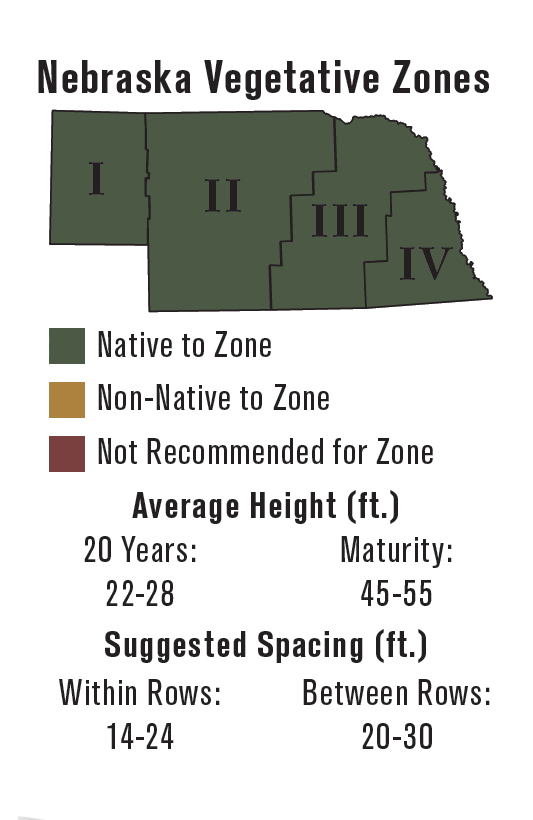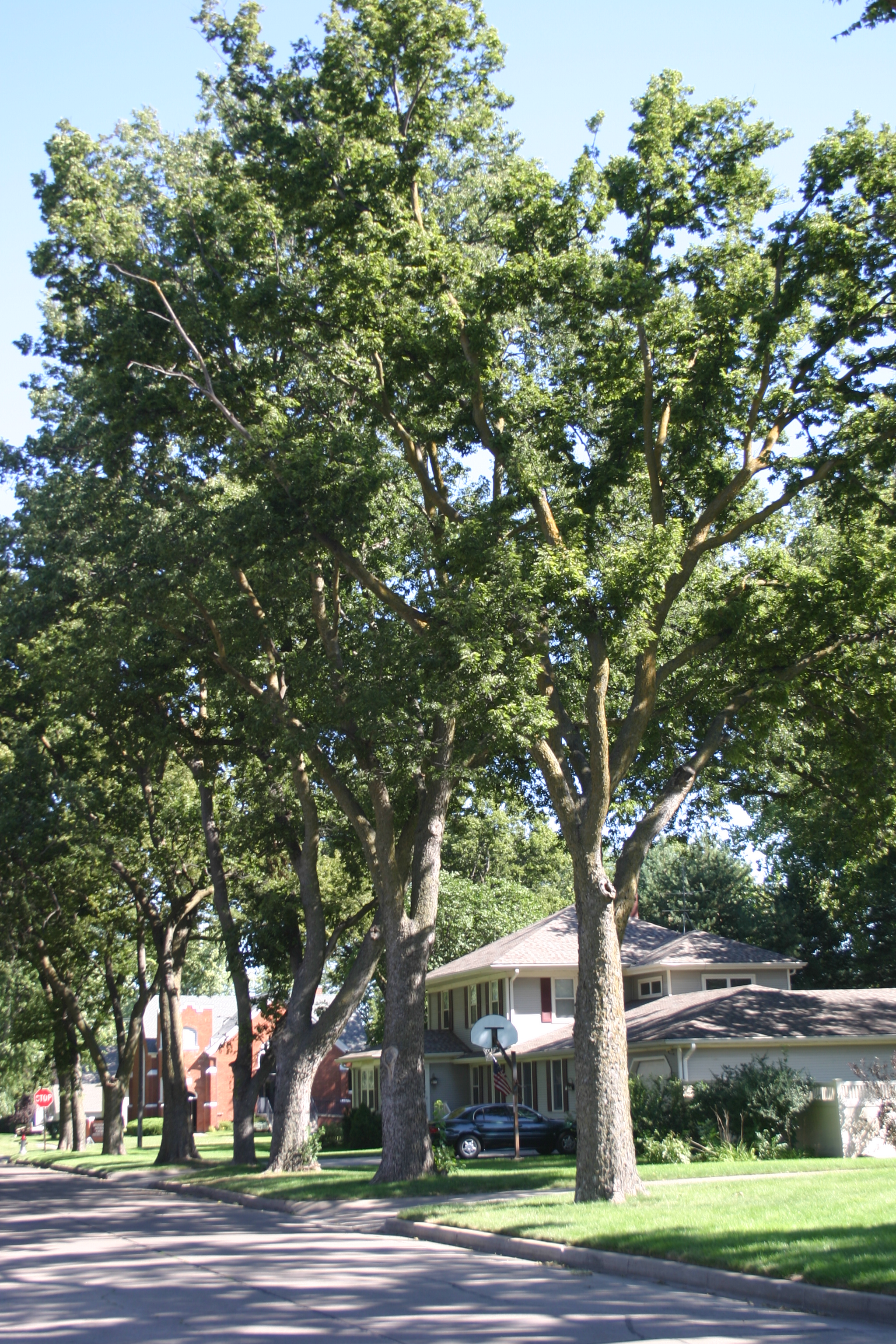Conservation Tree Program
Under the district’s seedling sales program, stock is provided to district patrons at the lowest possible cost. In order to assure quality stock, the seedlings are kept in a refrigerated state prior to delivery to the customer. To increase the survival rate, customers are instructed to prepare the site before planting. Following the planting, sufficient watering and proper weed control is imperative.
Trees orders are now open for 2026 spring seedlings until March 30. Trees are delivered in mid-April in time for spring planting.
Order Trees Online HERE
Seedling Sales and Planting
Seedlings Planted by the District
- The NRD will provide a complete tree planting service. This includes all necessary equipment, materials and labor.
- All trees and shrubs planted by the NRD will be ordered by the NRD. The sites are to be designed and planned by the NRCS or NRD, assisted by the customer, and submitted to the NRD.
- The order form to be used is the NRCS NB-Wood-1. Tree and shrub seedlings must be ordered in multiples of 25.
- Orders will be accepted between November and March.
- Survival of the seedlings is not guaranteed.
- The customer will be charged for planting all trees ordered. Payment must be made by the time of planting.
- If 1,000 seedlings or more are ordered, 10% down will be required at the time of order. The balance must be paid before planting. UNDER NO CIRCUMSTANCES WILL ANY PLANTING BE DONE UNTIL THE SEEDLINGS HAVE BEEN PAID FOR IN FULL.
- If the NRD is to do the planting, a minimum of 150 trees or shrubs must be ordered.
- The NRD will make a maximum of 120 plantings or plant 35,000 seedlings per season, whichever figure is reached first. The trees will do best if the ground is plowed or deep chiseled. If the ground is in sod form, plow or chisel in the fall and disc again in the spring. All customers will be notified prior to planting. If the plots are found unprepared to plant, the seedlings will be left with the customer. Any farmstead within the Upper Big Blue NRD boundaries is eligible.
Replacement Policy
Before replacement will be considered, the following criteria must be met by the customer:
- Proper ground preparation - plowed, chiseled and disked
- Seedlings watered during hot periods
- Weed control
NOTE: The district will replace seedlings if the stock is found to be in poor condition prior to planting. Planting errors will also be a consideration.
Replacement will not be made under the following conditions:
- Seedlings damaged by floods or hail
- Seedlings damaged by mowing or destroyed by farm equipment
- Seedlings planted in sod
- Poor ground preparation
- Lack of care following planting
Funds Available to Customers
- NRD/ State Cost-Share: Landowners may be eligible for assistance under the district’s Land Treatment Program (see Windbreak Planting NC-12)
- Federal Cost-Share: Contact your local NRCS office for information.
Sources of Funds
Program costs are paid for by tree/planting sales as well as local tax revenue collected by the NRD.
Seedlings Planted by Individuals or the District
- Seedlings must be ordered in multiple of 25.
- Orders will be accepted from November to March.
- Survival of the seedlings is not guaranteed. The district will only replace seedlings if they are found to have been in poor condition prior to delivery to the customer.
- Payment must accompany the order.
- If 1,000 seedlings or more are ordered, 10% down will be required at the time of order. The balance must be paid before receipt of the seedlings, or planting of the seedlings by the district.
UNDER NO CIRCUMSTANCES WILL ANY PLANTING BE DONE UNTIL THE SEEDLINGS HAVE BEEN PAID FOR IN FULL.
Top Selling Tree Species in the Upper Big Blue NRD
Eastern Redcedar
Eastern redcedar is native to Nebraska. It is highly adapted to a wide range of sites and has the highest survival rate of any conifer planted in Nebraska. Its deep roots and small leaf surface make it very drought resistant. The foliage turns a russet color in winter. It is the primary species in most windbreaks. Redcedar is a prolific seeder and requires management.
Two foliage diseases, Cercospora blight and Phomopsis blight, can cause substantial defoliation and kill redcedar if not controlled. Cercospora blight is common and widespread. A third foliage disease, Kabatina blight, can kill branch tips but is not a serious concern. Spider mites occasionally cause damage, and young trees may require protection.
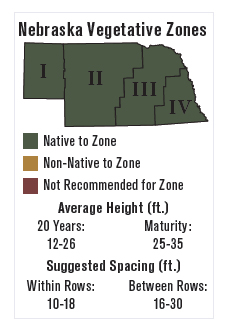
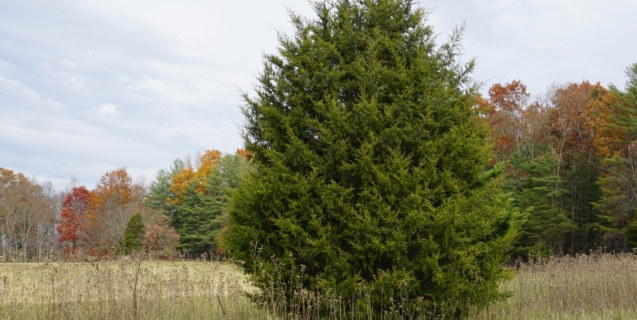
Colorado Blue Spruce
Colorado blue spruce is native to the Rocky Mountain region. The color ranges from dark green to silvery blue green. Blue spruce will form a very dense windbreak when planted close together, but they only have a medium growth rate. Colorado blue spruce is best used as the inside row of farmstead windbreaks. Survival is best if the seedlings are protected from drying winds by placing wooden shingles on the south and west sides. The tree cannot withstand long-term drought. Spider mites can be a problem. Rhizosphaera needle cast can be a problem under persistent wet conditions.
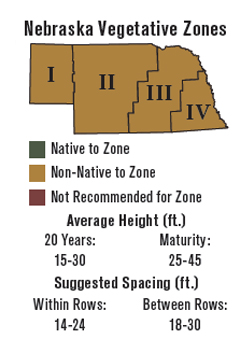
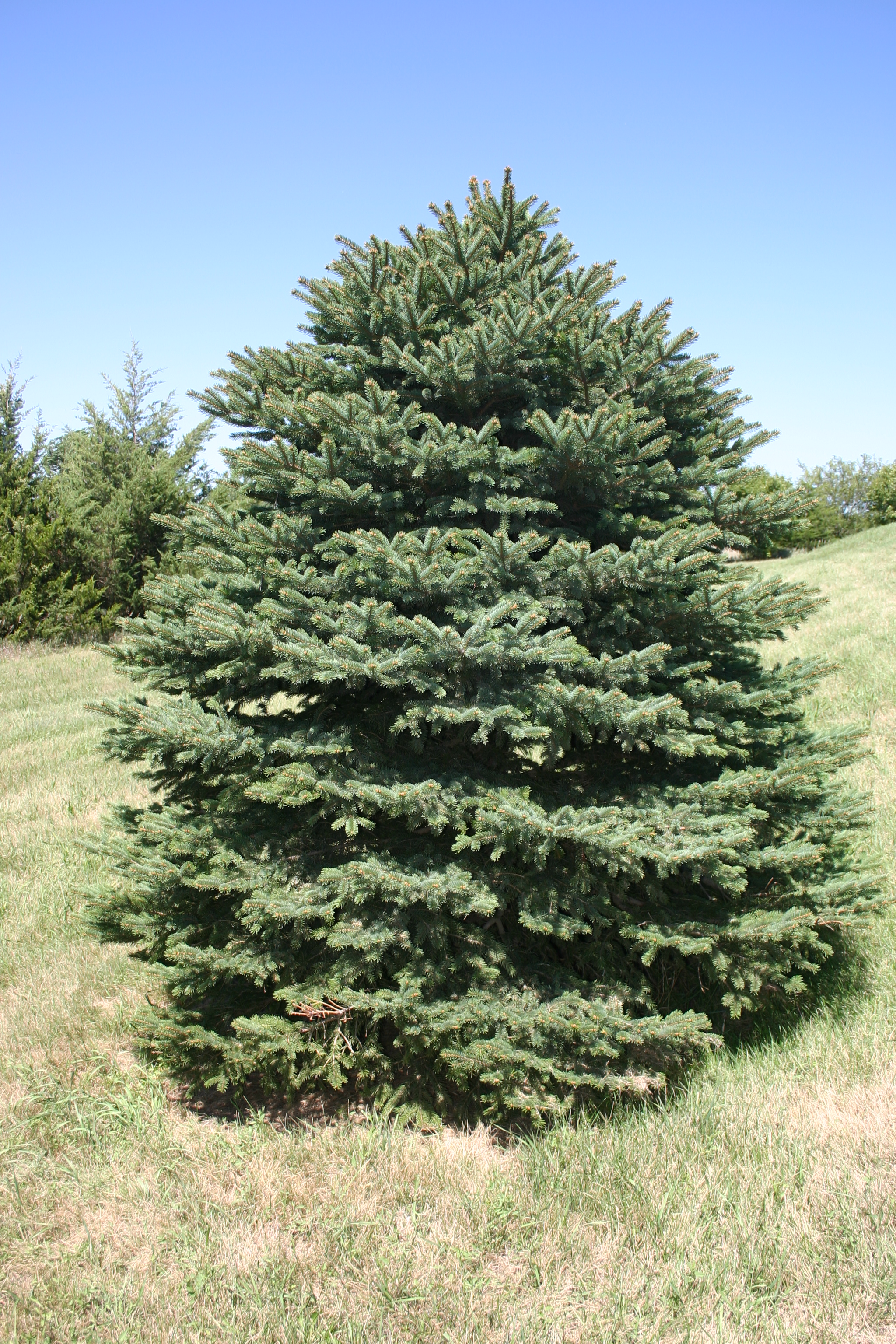
American Plum
American plum is native to Nebraska and is well adapted to a wide variety of soil and climatic conditions. It forms dense thickets ideal for the outside rows of windbreaks and for wildlife habitat. Birds use the thickets for nesting, feeding, and resting areas. The twigs are a preferred source of browse for deer and rabbits during the winter. White flowers bloom in May, with red to purple plums ripening during September. The earliest ripening fruit is usually the sweetest and makes the best jelly. Brown spot, plum pocket and tent caterpillars can cause some problems.
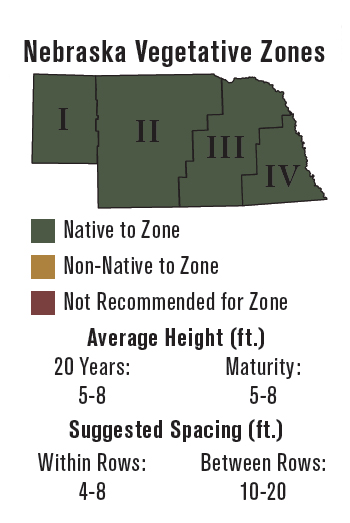
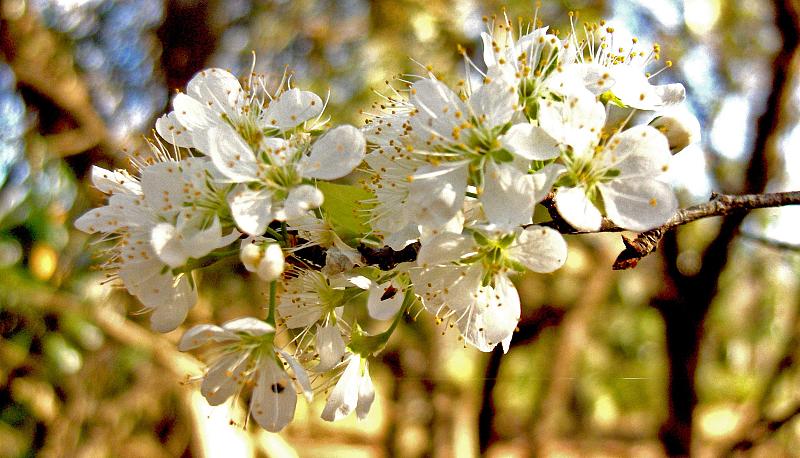
Ponderosa Pine
Ponderosa pine is native to northwest and north central Nebraska. Needles are grouped in threes, and sometimes pairs, 5 to 10 inches long. Cones are 3 to 6 inches long and each scale is armed with a sharp recurved spine. It can withstand prolonged drought and is the best pine to use on severe sites. It is best used in east and south inside rows of windbreaks. Zimmerman pine moths and Sphaeropsis (Diplodia) blight can be serious problems and can kill or deform trees if not controlled. Pine tip moths can stunt growth by killing branch tips and Dothistroma needle blight can occasionally cause defoliation if not controlled.
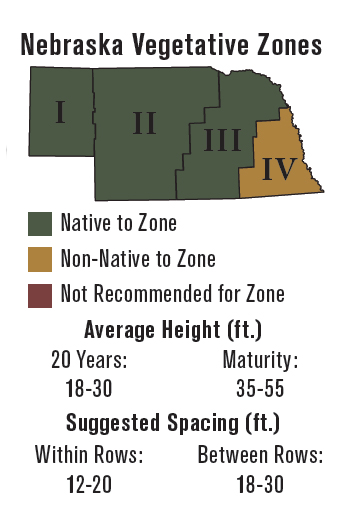
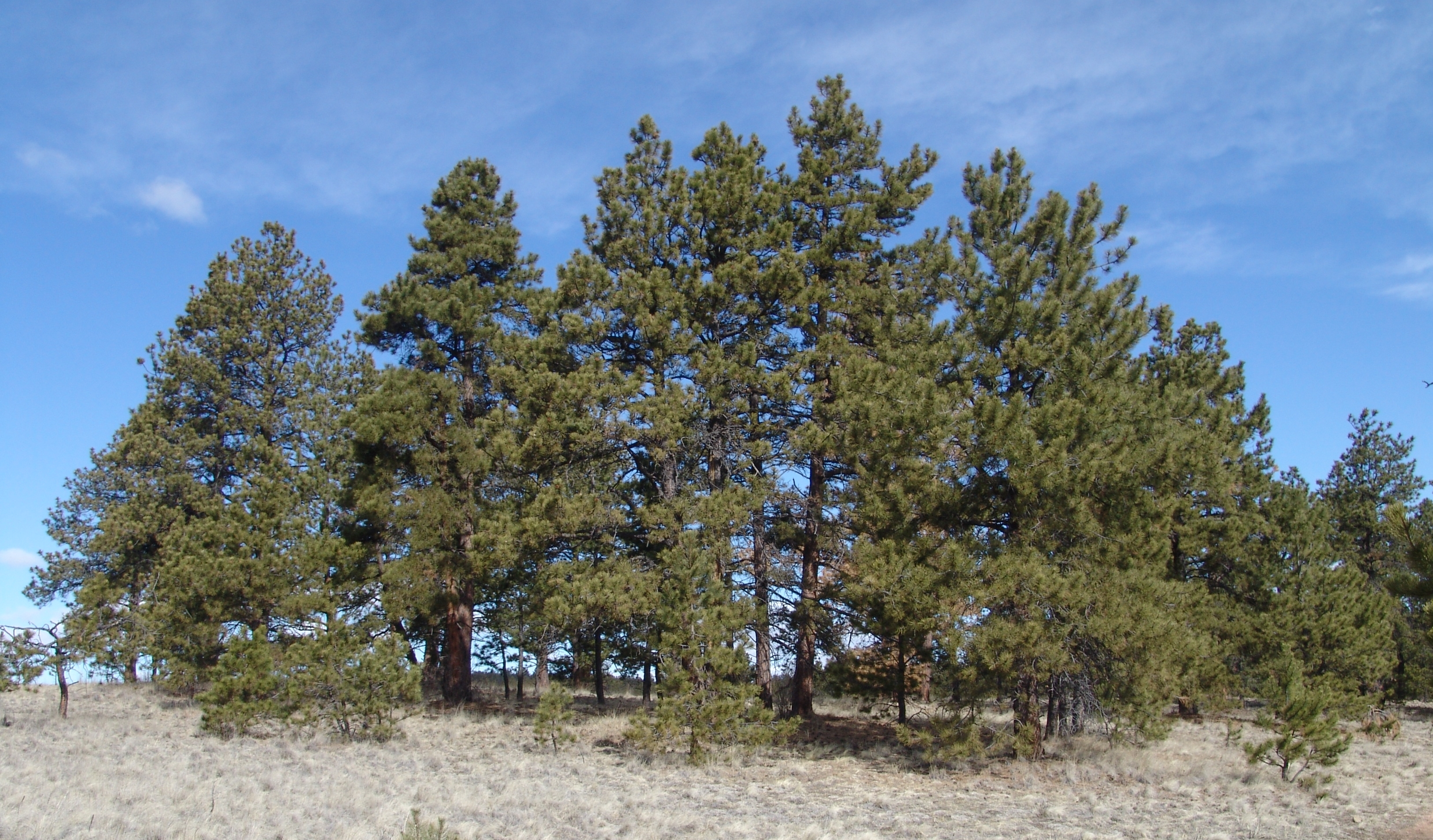
Chokecherry
Chokecherry is a medium/large-sized shrub that forms a dense thicket from root suckers. It is used for the outer row in multirow windbreaks. Chokecherry is good wildlife habitat, providing food and cover for birds and small mammals. Showy white flowers bloom in April or May, and the cherries ripen during July. The cherries can be used for making jelly and wine. Chokecherry should not be planted near other stonefruit species because of western x-disease and black knot. Tent caterpillars are often a problem in the spring but rarely kill the plant.
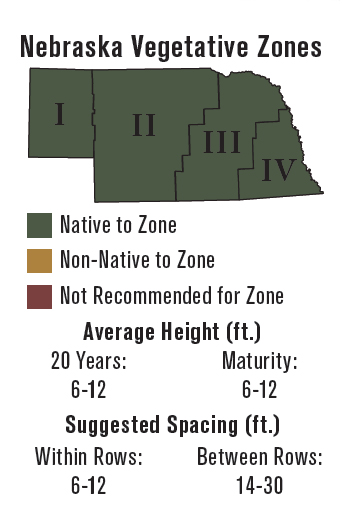
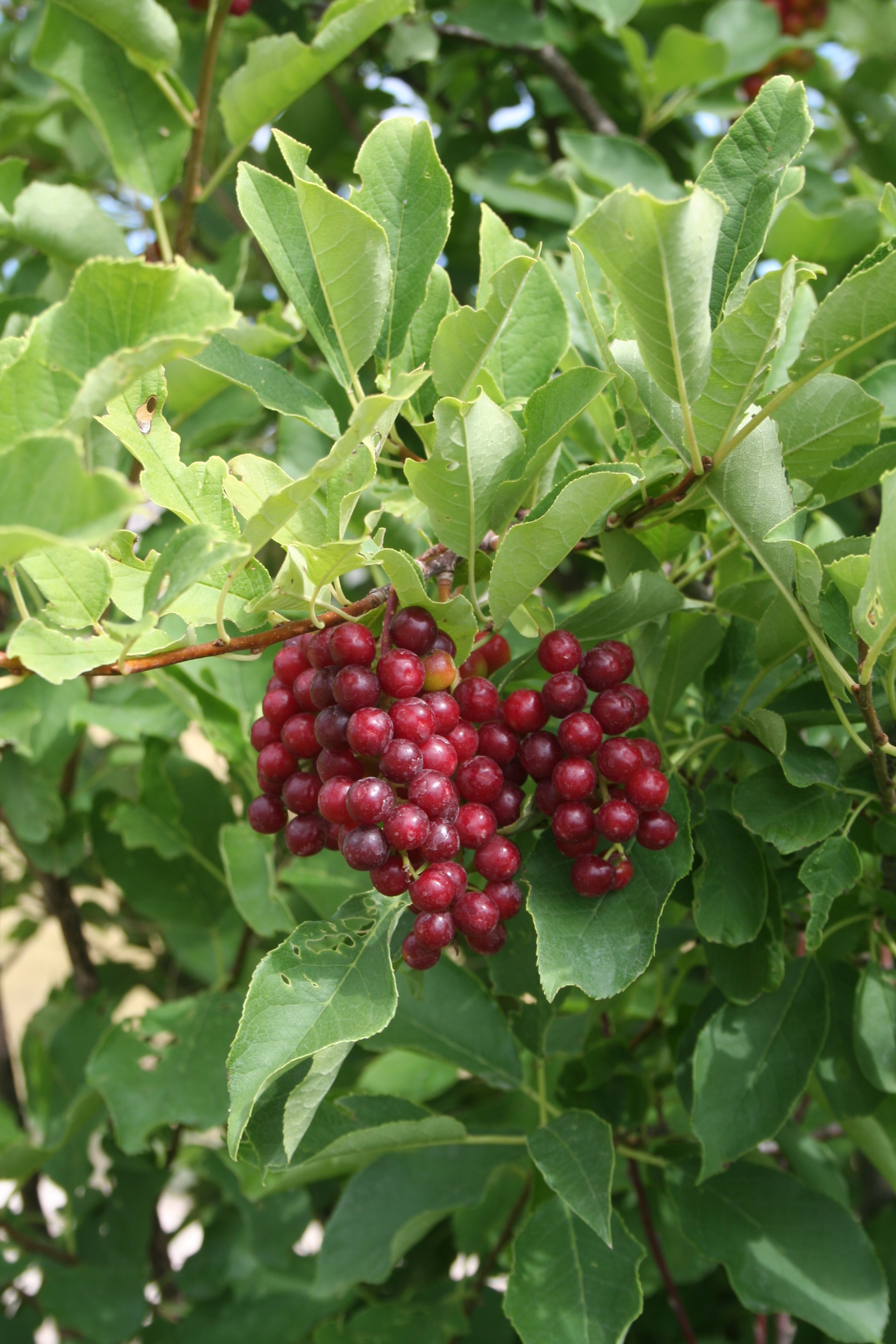
Bur Oak
Bur oak is native to Nebraska. It grows on a wide variety of sites but grows best on rich, moist bottomlands. Bur oak has a slow to moderate growth rate and is fairly drought tolerant. It is an excellent species to include in wildlife habitat plantings. It is less susceptible to oak wilt than northern red oak and has no serious insect problems. Oaks may have to be protected from deer when young.
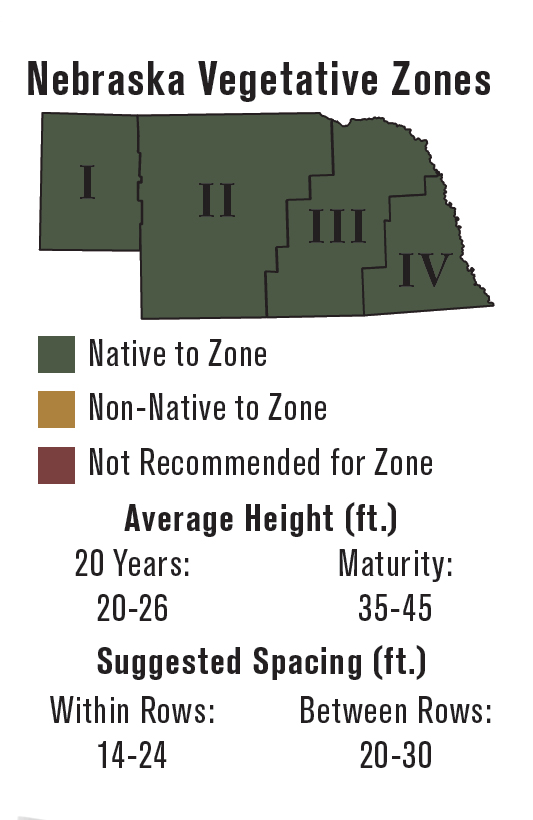
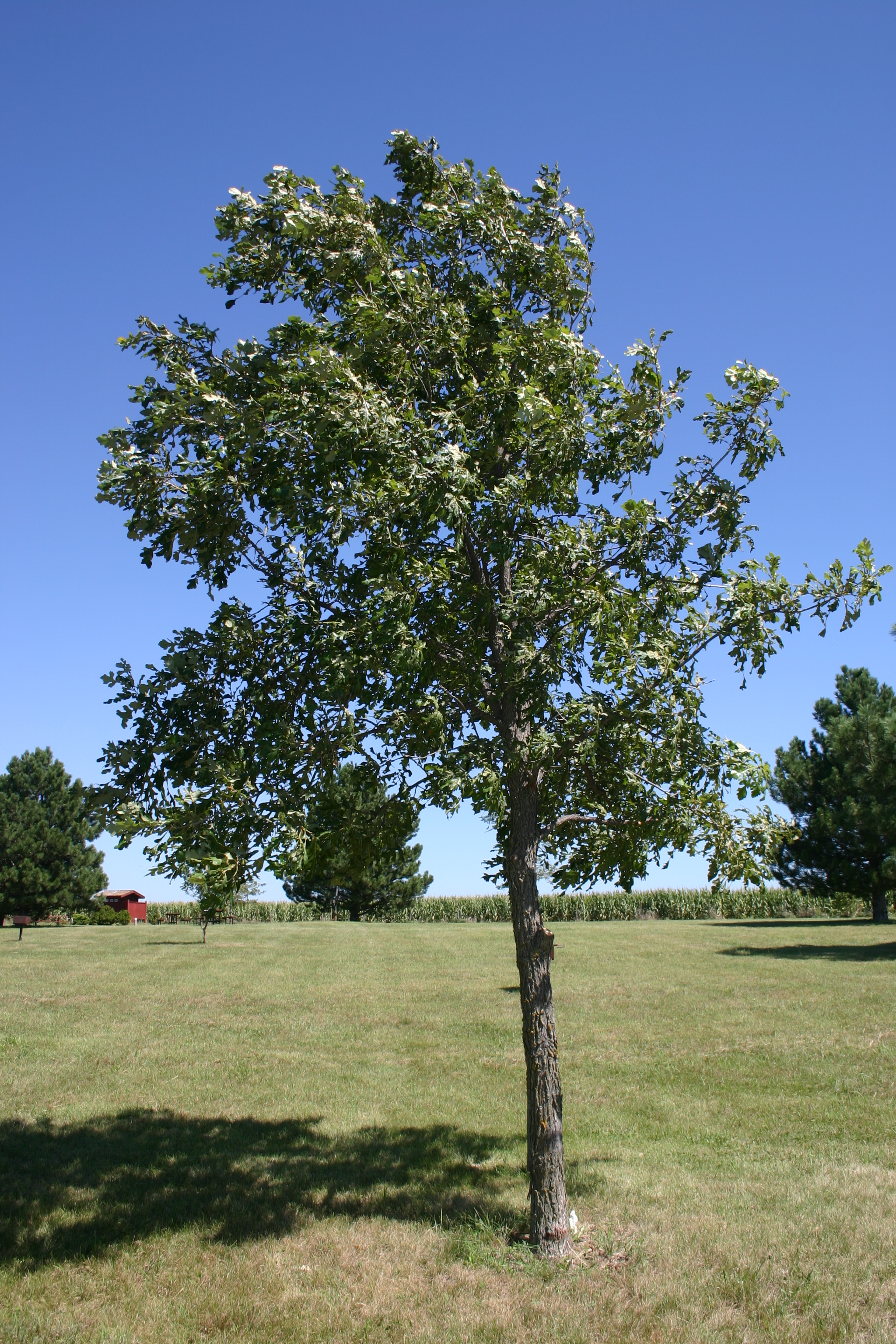
Lilac
Common lilac is a suckering, upright medium-tall shrub that is best located in the outside row of windbreaks. Fragrant white to lavender flowers bloom during May. Lilac is rarely used in wildlife plantings since it does not form thickets and the seeds have little food value. Powdery mildew and oystershell scale are common problems.
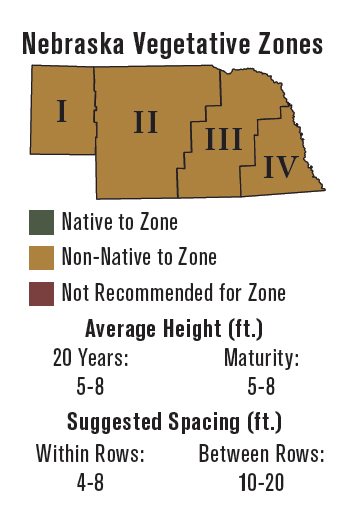
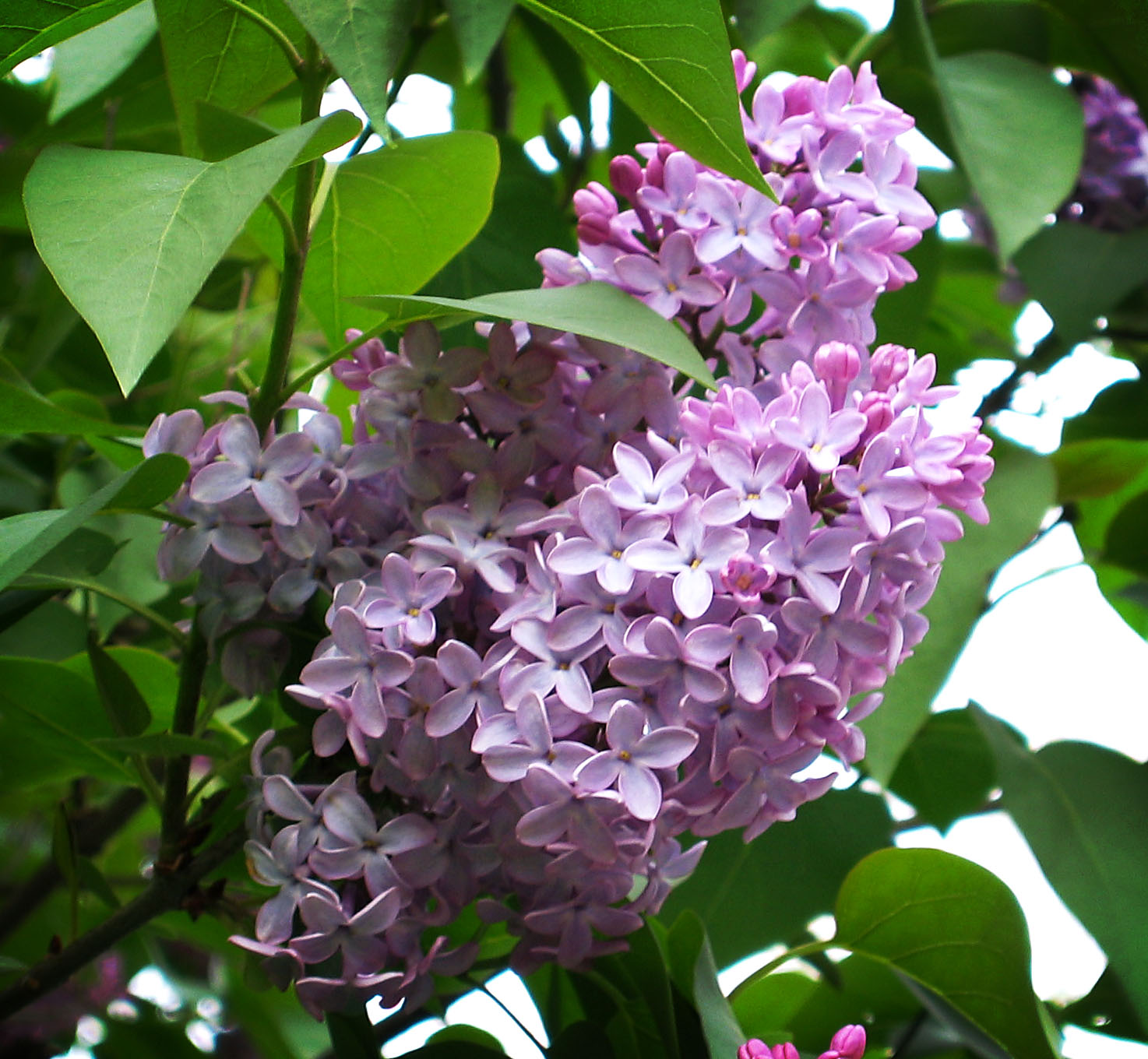
Peking Cotoneaster
Peking cotoneaster is a low to medium-growing shrub introduced from Asia. It has dark, glossy green foliage that turns orange to red during the fall. The berrylike fruit ripens to a dark red or black in early October and persists late into the winter, providing a good winter food source for birds. This is a sturdy shrub for the outside row of windbreaks. Fire-blight of the twigs and stems can be a problem.
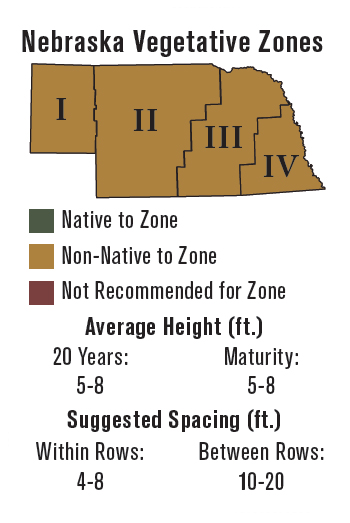
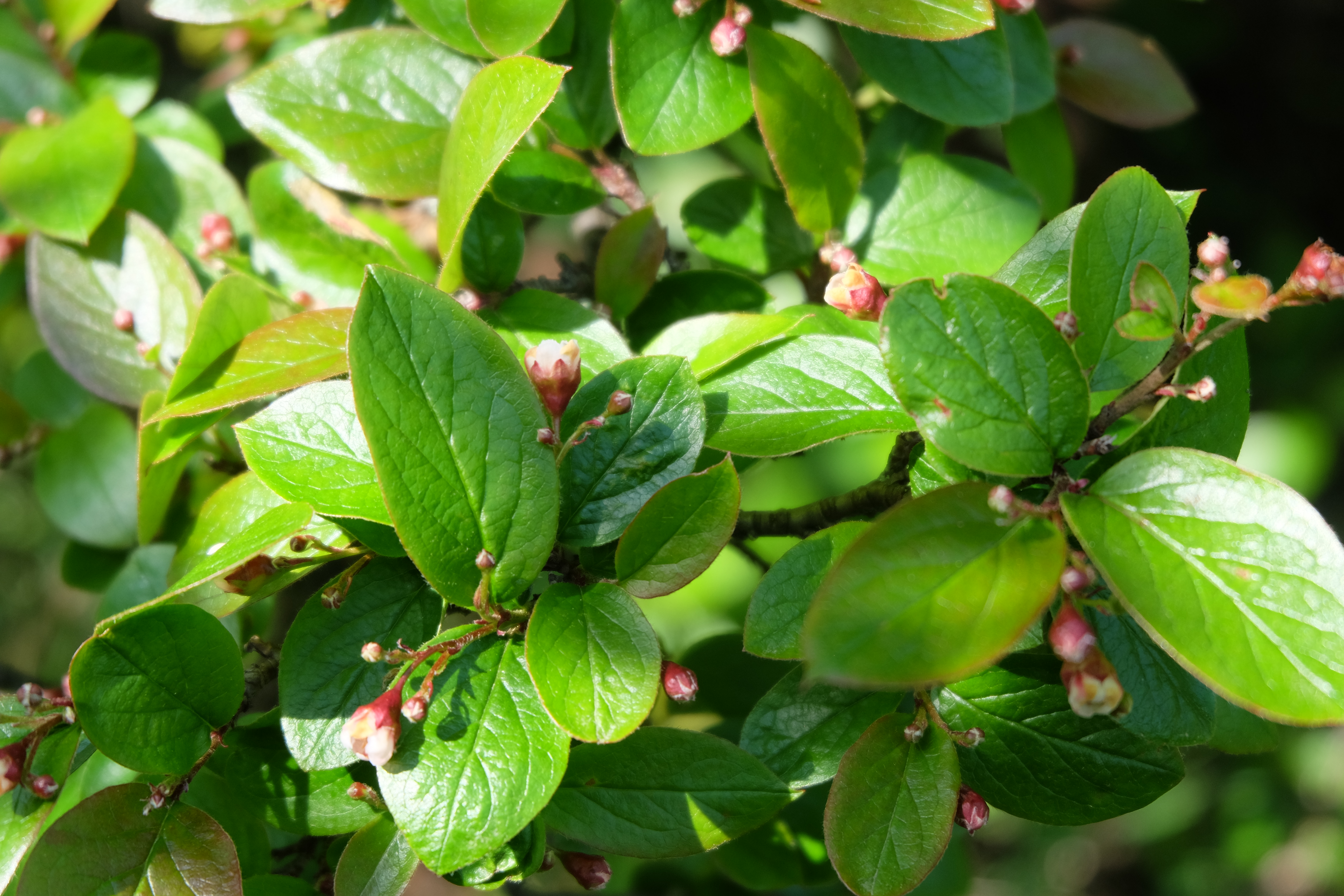
Red Osier Dogwood
An open, spreading, multi-stemmed, medium to large shrub for farmstead and field windbreaks, and riparian plantings. Horizontal branches at the base. Fruit and twigs are used by several species of wildlife, such as robins, cedar waxwings, rabbits, and deer. Provides dense cover for a large number of wildlife species.
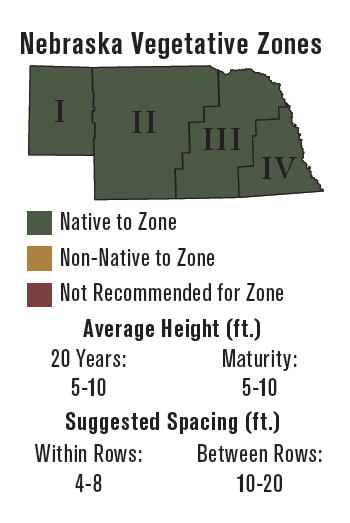
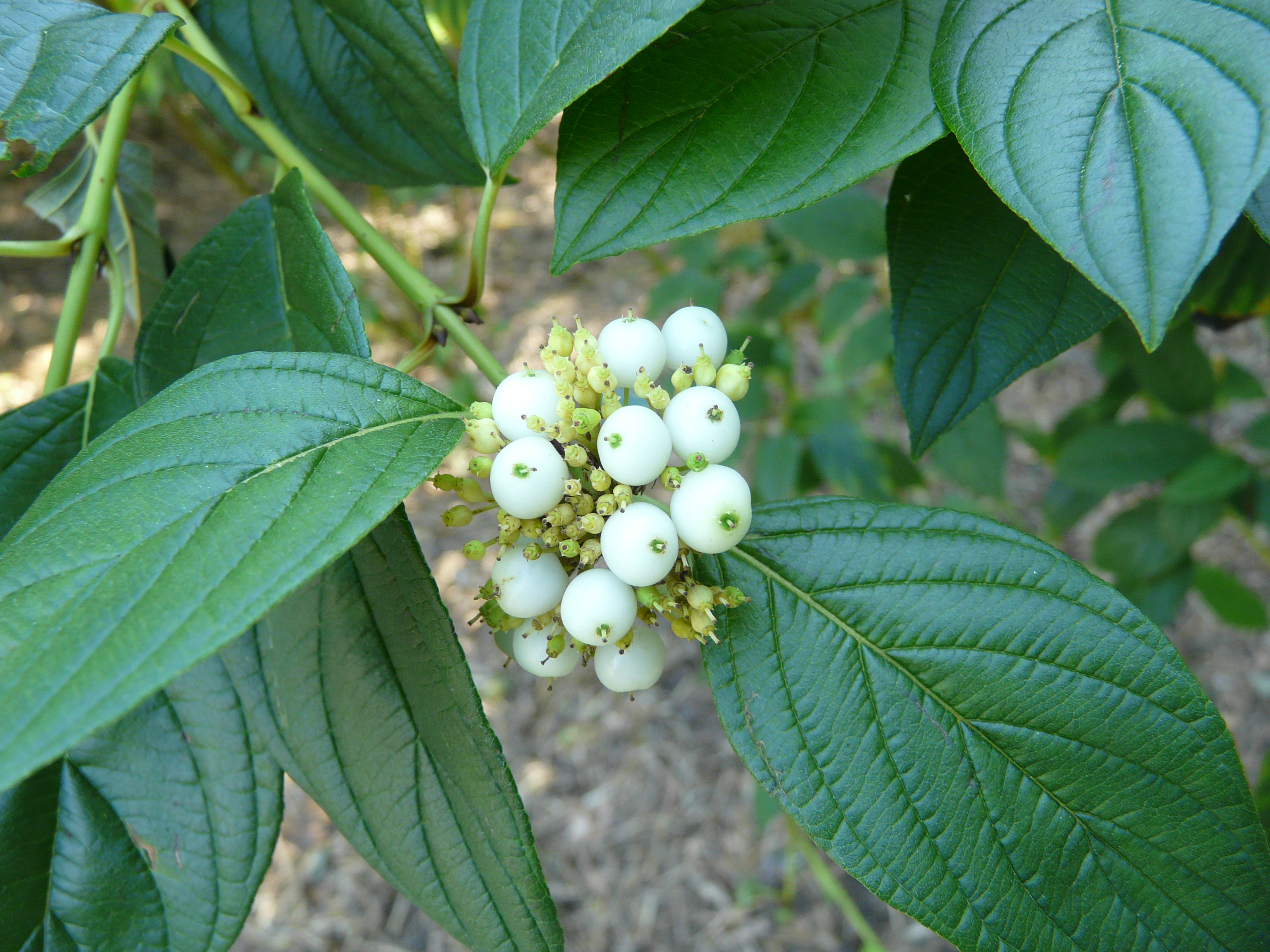
Black Walnut
Black walnut is native to Nebraska’s eastern and north central fertile bottomlands. It is highly prized for its rich, chocolate-brown wood and nut meats. Straight, limb-free trees are very valuable in the timber industry. Walnut trees have a medium growth rate and a long life span. Walnut requires a deep, silty-loam soil having good internal drainage for maximum growth. Walnut seedlings have been planted in the Sandhills for wildlife habitat and as a local source of nut meats. Walnut caterpillars can defoliate trees in mid- to late summer, but this seldom does any permanent damage. Walnut is highly susceptible to broadleaf herbicide damage.
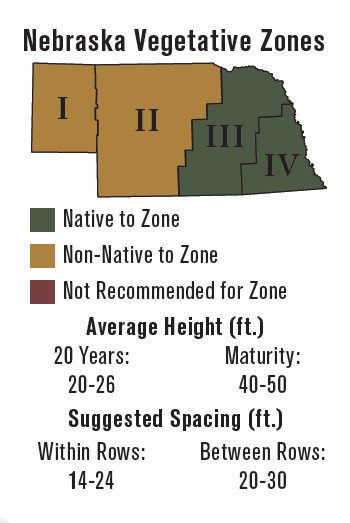
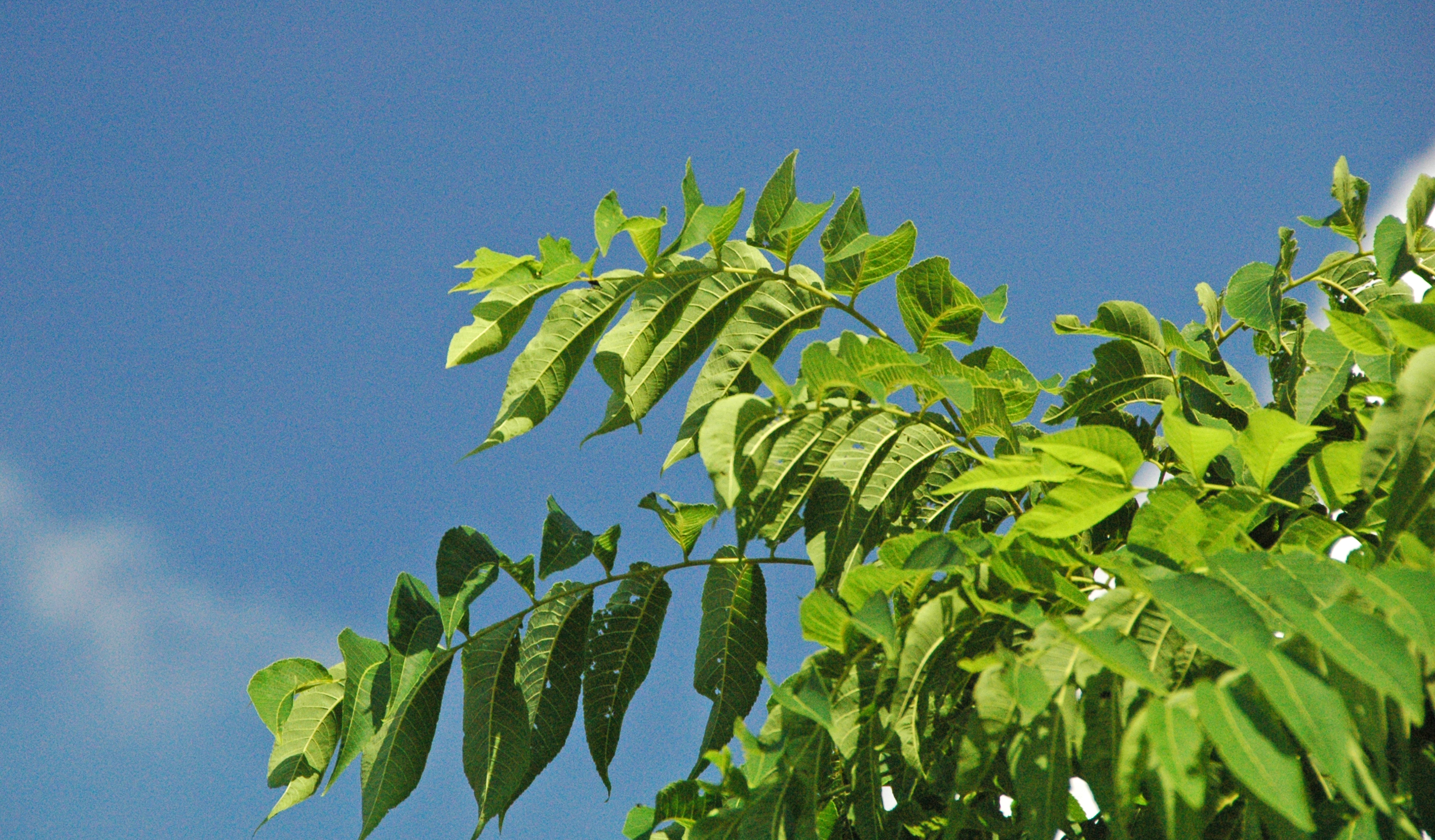
Hackberry
Hackberry is a native tree found throughout Nebraska. It has a medium to long life span. Hackberry leaves are elm shaped; the grayish bark has a warty appearance. Once established, a moderate rate of growth and tolerance to adverse weather can be expected. Hackberry can be used in single-row windbreaks to slow summer winds and increase the snow catch over fields during the winter. Witches broom on branches and nipple-galls on lower leaf surfaces can be unsightly, but cause little adverse effect.
